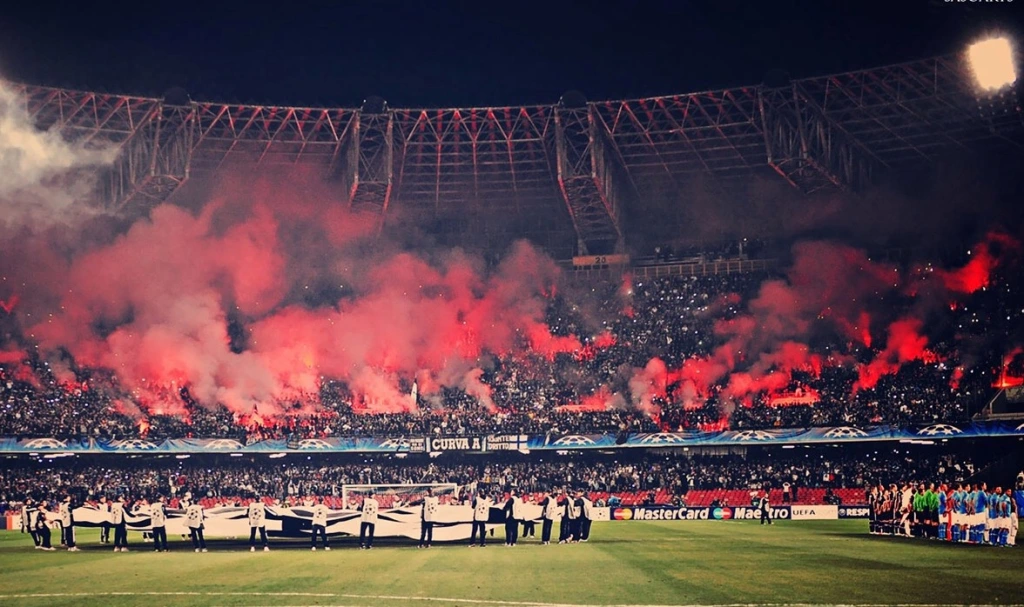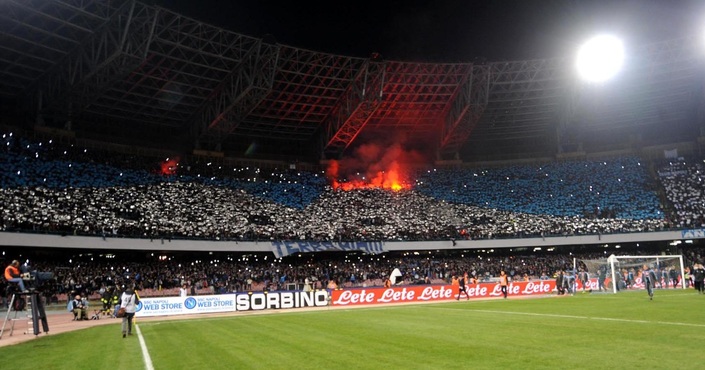Stadium: San Paolo, capacity 60,240
The San Paolo is another one of Italy’s great stadiums that is shrouded in nostalgia and drama. It has seen the highs and lows of Italian football, hosting Napoli games from Serie A to Serie C. Despite the faltering performances of the team over the years there has always been a Neapolitan crowd in the San Paolo cheering on their team.
Even in Serie C they drew a crowd of 51,000, which stands as a record. The ground has always produced a hostile environment and has been at its very best as Napoli made their way into the Champions League. The San Paolo was often near full capacity and seemed to bring the entire city to a standstill on those hazy European nights.
The city’s link to Diego Maradona gives it a particularly nostalgic feel. The great Argentinian played there for seven years and was nothing short of a Demigod to the population of Naples. They even loved him when he asked the Neapolitans to support Argentina instead of Italy in the 1990 World Cup semi-final. The only thing that prevents the club from renaming the ground after Maradona is the Italian law that says he would need to be dead for 10 years first.
The Neapolitans are passionate in the extreme and they make the third biggest stadium in Italy a cauldron that is feared by away teams and loved like a church by its people.
The Ultras
On the afternoon of 10 May 1987, a deathly quiet fell over the city of Naples. The streets were desolate, prompting Italian anthropologist Amalia Signorelli to write: “The world had changed, the noisiest, most crowded and most chaotic city in Europe was deserted.”
But on occasion, murmurings could be heard. They were the cheers and jeers of the Stadio San Paolo. The world may not have changed, but SSC Napoli were on the brink of winning their first Serie A title in 61 years. A 1-1 draw with Fiorentina secured Napoli’s triumph. The city erupted. Exultant Neapolitans poured on to the streets. Days of partying began. Fans danced on rooftops, fireworks exploded, cars and buildings were draped in sky blue.
In his book Calcio, John Foot observed that: “During the celebrations, Napoli fans displayed all the classic traits of what has become known as the Neapolitan ‘character’: irony, parody and a sense of the macabre, obscenity and blasphemy.” On the walls of the city’s graveyard, graffiti appeared in vernacular “Guagliu! E che ve sit pers!” (“Guys! You don’t know what you are missing”). Satirical funerals were arranged for Juventus. The supporters paid homage to their heroes and one man stood above all others as the saviour of Naples: Diego Armando Maradona.
The use of religiously infused language here is no coincidence. To this day, Maradona is awarded godlike status in the city. During his spell at the club, they won their only two Scudetti as well as a Uefa Cup in 1989. This prompted cultlike adoration. Thousands of babies were named Diego or even Diega, while streets and neighbourhoods also took the revered name. Murals were made comparing him to the city’s patron saint San Gennaro. One even depicted him in the arms of the saint himself.
His humble background and rebellious nature struck a chord with the Napoletani.His passion, volatility and footballing genius reflected Neapolitan character. In a sense, Maradona became an adopted son of Naples.
But perhaps more importantly, the he helped Napoli break the overwhelming dominance established by the affluent Northern trio of Juventus, Milan and Internazionale. At a time when the hostile, anti-southern politics of northern regionalist parties such as Lega Nord were taking hold in the terraces of northern clubs, Maradona restored pride to the city of Naples. The Napoletani now had a riposte to the anti-Neapolitan rhetoric. It was smug and simple: “May 1987, the other Italy has been defeated, a new empire is born.” Napoli’s fanatical supporters still revel in the memories of a time when the giants of the north were humbled by a resurgent Naples.
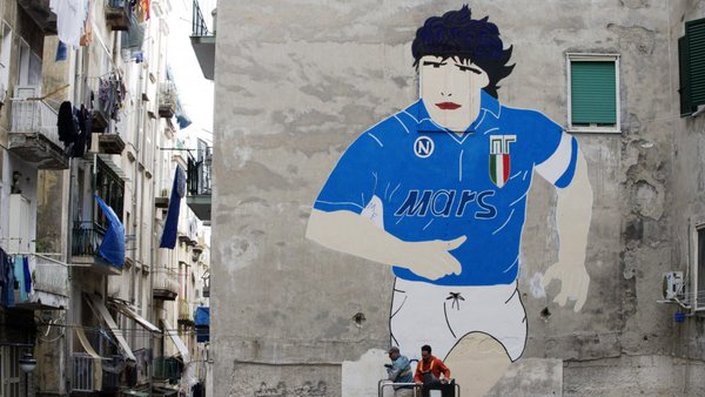
The Partenopei are the fourth-best supported club in Italy and their following also extends to various corners of the globe. According to Italian sports journalist Domenico Carratelli, Napoli is a club that “brings people together from all walks of life – rich and poor alike. It is the people’s team.”
Surprisingly, outside of their transient success in the late 1980s, there is a paucity of major honours. This has rarely detracted from the devotion of their support. Even after the club went bankrupt and were relegated to Serie C1 back in 2004, they broke divisional records for attendance, with numbers in excess of 50,000. One urban myth claims that the roar of the crowd celebrating a Napoli goal at the San Paolo has occasionally been registered on the seismographs at the city’s university.
The story of Napoli’s ultras is perhaps best summarised as a tale of two curvas: Curva A (the north bend) and Curva B (the south). Over time, the Curva A has assumed a more prominent role and has been home to a variety of groups including: Mastiffs, Vecchi Lions, Teste Matte and Brigata Carolina. Yet, a divide has always characterised the relationship between Curva A and B, with the former being notoriously riotous and the latter more tranquil. This, however, only serves to rouse one of the most charged atmospheres in Serie A.
The first ultra group to create match-day choreographies were the Commandos Ultras Curva B (CUCB). Founded in 1972 by Gennaro “Palummella” Montuori, the group quickly established themselves by creating their own newspaper and television programme. During their existence, CUCB allegedly denounced violence, a sentiment reflected in a banner they unveiled back in the 1980s: “Violence divides us, our passion unites us.” This period also saw the inception of women’s Ultra groups, including Ultra Girls and Ladies Napoli, the latter formed by university lecturers.
Unsurprisingly, the CUCB glory days came during the Scudetto-winning years. The archaic San Paolo would bounce to the rhythm of Porompompero, while the ultras’ ubiquitous presence at away games would ensure that a pocket of an Italian stadium would be transformed into a mini-Naples for the afternoon.
However the departure of Palummella, supposedly due to the death of his brother, caused CUCB to disband. As a result, Fedayn (1979) and Ultras Napolimonopolised the Curva B. The two have lived an uncomfortable coexistence, with both refusing to chant in tandem. Fedayn’s more belligerent reputation saw them receive an invitation to join the Curva A, their slogan “Estranei alla Massa” (“Outside the Norm) encapsulating their intransigence. Indeed the Fedayn’s reputation makes the Curva B’s more serene tag somewhat risible.
While Napoli’s ultras have often declared themselves apolitical, the historic and cultural divide between north and south has dictated some of their fiercest rivalries. Historian Nicholas Doumanis has argued that the northern and southern halves of Italy are like two different countries, with their own social, cultural and economic situations. Parties such as Lega Nord have even advocated secession from the south altogether. The Napoletani are frequently subjected to territorial insults, which range from chants about the city being destroyed by their neighbouring volcano Vesuvius to the people being dirty and carrying cholera. Fixtures against Juventus, Hellas Verona, Milan and Internazionale are particularly explosive.
That said, irony is not lost on the Neapolitans. When there is a chance to decry the Italian authorities, regional rivalries can always be put to one side. When supporters of their northern foes were hit with stadium bans for territorial discrimination during the 2013-14 Serie A season, the Partenopei faithful mocked the Italian football federation’s decisions with a banner reading: “[We are] Naples’ cholera-sufferers. Now close our curva!”
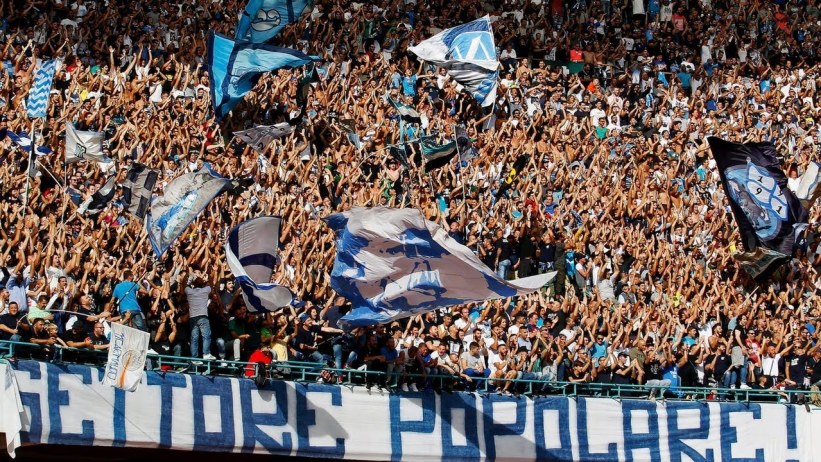 For all this bravado, these rivalries also reveal the more sinister elements of Italian football. Napoli’s ultras have been involved in some deplorable violence. On 3 May 2014, people tuned into the Coppa Italia final between Napoli and Fiorentina to witness scenes of anarchy and chaos. Violent clashes between opposing fans had delayed the kick-off. Three Napoli fans were hospitalised. One, Ciro Esposito, would die from gunshot wounds after weeks in a critical condition.
For all this bravado, these rivalries also reveal the more sinister elements of Italian football. Napoli’s ultras have been involved in some deplorable violence. On 3 May 2014, people tuned into the Coppa Italia final between Napoli and Fiorentina to witness scenes of anarchy and chaos. Violent clashes between opposing fans had delayed the kick-off. Three Napoli fans were hospitalised. One, Ciro Esposito, would die from gunshot wounds after weeks in a critical condition.
It later emerged that the Napoletani had clashed with Roma fans, despite the Giallorossi not even participating in the final. A Roma ultra, Daniele De Santis, was later charged with the death of Esposito. There is no love lost between Napoli and Roma, a rivalry that is made especially hostile because it is not based on the regional divide but is solely concentrated on football.
The other enduring image was that of Gennaro De Tommaso, the Napoli fan who was charged with talking to Napoli captain, Marek Hamsik, about having the game postponed as rumours swept the stadium that Esposito had died. The game went ahead and Rome’s police commissioner later denied that there had been any negotiation, saying the police had merely asked Hamsik to inform the fans of Esposito’s condition.
Having already been banned from attending stadiums for five years, De Tommaso was arrested in September with four other ultras for their involvement in the Coppa Italia final, with charges including “throwing hazardous materials and invasion of a pitch at a sporting event”. The incident was chilling and people like De Tommaso bring shame upon Il Calcio.
While Napoli’s ultras cannot be held accountable for the actions of mindless individuals, their violent reputation is not fabricated. Thus one is left at odds. On the one hand there is no place for such criminal behaviour, let alone in football. On the other, without the ultras we wouldn’t enjoy the moments that make spines tingle and hairs stand on end. Moments such as the famed repetition of “Gonzalooo Higuaín” nine times while the decrepit walls of the Stadio San Paolo shudder.
The famous expression “See Naples and die” portrays the beauty and excitement of this city. After playing in the Stadio San Paolo for Manchester City, Yaya Touré observed that the relationship between Napoli’s fans and their team was visceral, comparable to the love shown between a mother and her son. It is this passion that produces one of the most awe-inspiring yet intimidating atmospheres in European football.
Classic Player: Careca
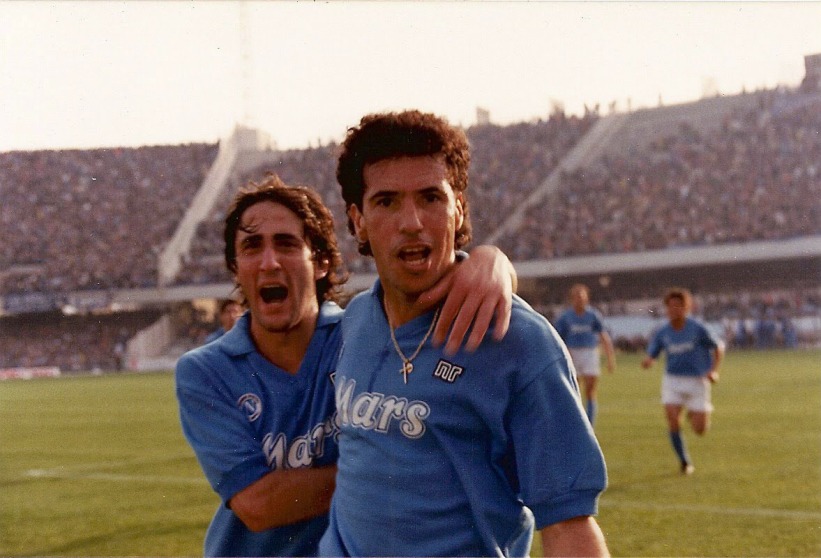 There is no debate about whether Maradona was the greatest footballer to play for Napoli. He was a monumental reason for their success in their greatest era. However, it should not be forgotten that others played their role in the late 1980s and early 1990s. Nobody did this more than Brazilian forward Careca.
There is no debate about whether Maradona was the greatest footballer to play for Napoli. He was a monumental reason for their success in their greatest era. However, it should not be forgotten that others played their role in the late 1980s and early 1990s. Nobody did this more than Brazilian forward Careca.
Part of the “Ma-Gi-Ca” trio with Bruno Giordano and Diego Maradona, Careca became a legend in Naples. The Brazilian joined the Scudetto-winning squad in 1987 and scored 13 goals in his first season. The Neapolitans and Careca then went on a whirlwind romance as he helped them to win the Uefa Cup in 1989, a Scudetto in 1990 and a SuperCoppa Italiano in 1991. He was with the club for five years, playing in 164 games and scoring 73 goals.
If there was a dealership for Brazilian centre-forwards, Careca would have been the model in the window. He had pace in abundance and he managed to combine this with breathtaking skill. Tricks and flicks were not all he possessed, and despite the numerous times he rounded the keeper on one-on-one situations, he was also known as a poacher. With a superb leap and great heading ability, he was deadly from six yards and many of his goals came from inside the box. He could, however, unleash a venomous strike from distance (just ask Walter Zenga).
The love felt for Careca among the Napoli fans was overwhelming. On 23 February 1999, he played his testimonial at the San Paolo stadium. More than 50,000 Neapolitans came to see this farewell match and it was no surprise that he chose to do this in Naples and not Brazil.
During the match the crowd slipped into delirium, screaming his name and singing the famous song dedicated to him: “O Carè, Carè, Carè, tira la bomba, tira la bomba” (“Come on Careca, Careca, Careca, throw the bomb, throw the bomb”). Napoli were going through a terrible spell at the time but fans of all ages were taken back to an almost mythical era.
Maradona may have been their god but Careca had helped create him. He finished of countless moves that were orchestrated by the Argentinian genius. Maradona may not have achieved what he did in Naples without the talent of this Brazilian vulture leading the forward line. When calcio ruled the world, Careca was having the time of his life. When he “threw the bomb” the San Paolo exploded.

